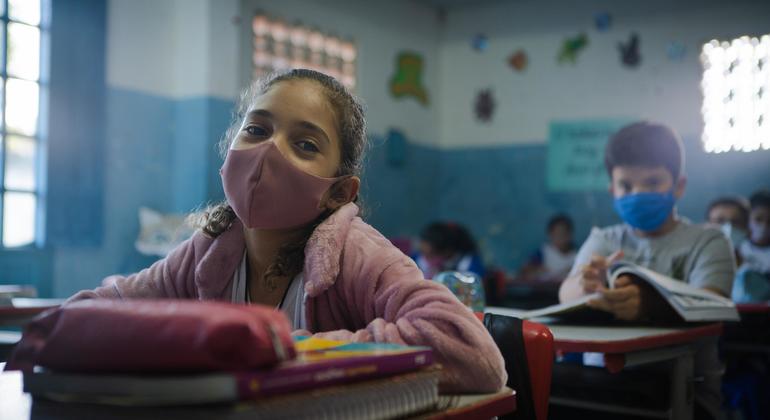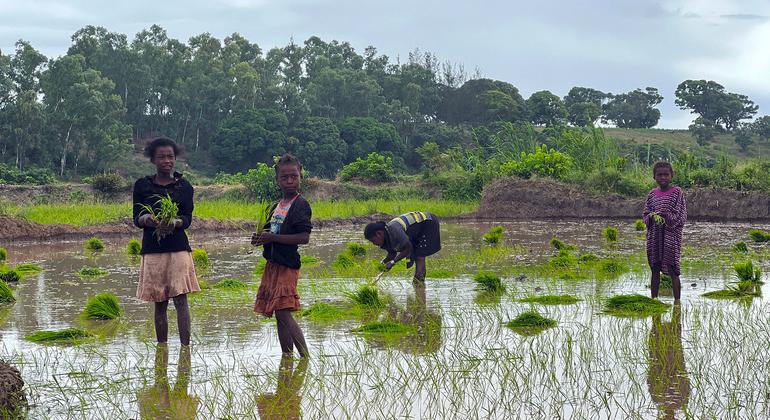In a statement, Christian Lindmeier, a spokesperson for the World Health Organization (WHO), said that vaccine-derived poliovirus type 2 (VDPV2) had been identified at six locations in wastewater samples collected on 23 June in Khan Younis and Deir al Balah.
To date, no one in Gaza has received treatment for paralysis or other symptoms caused by poliovirus infection.
“It is important to note that for the moment the virus has only been isolated from the environment; no associated paralytic cases have been detected,” he told reporters in Geneva. As part of the response efforts, WHO in the Occupied Palestinian Territory is already working with the local health authority, the United Nations Children’s Fund (UNICEF), the United Nations agency for Palestine refugees (UNRWA) and other partners to assess how far the poliovirus has spread.
This work will determine the measures needed to stop any further spread, “including rapid vaccination campaigns,” the WHO spokesperson explained.
White flags
Meanwhile, the UN human rights office for the Occupied Palestinian Territory (OHCHR OPT) described evidence that people in Gaza continue to suffer “immensely” and some “hold white flags” as they move in search of refuge.
“People are once again moving from north to south, even though they make the journey knowing it is fraught with danger,” said Ajith Sunghay, head of UNHCR in the Occupied Palestinian Territories.I saw a motorcycle and a trailer loaded with personal belongings burning on the road. There were no bodies, but it was clear that no one could have survived the attack.. In the same way, I saw a bloody donkey cart loaded with personal belongings. It was also abandoned. It is not clear why or who carried out these attacks.”
The UN human rights official described the impact of “Israel’s dismantling” on the enclave’s ability to maintain law and order and security in Gaza.Our Office has documented alleged unlawful killings of local police and humanitarian workers, and the strangulation of supplies essential to the survival of the civilian population. Anarchy is spreading.”
“The hostile environment due to war and the breakdown of civil order also pose enormous challenges to any meaningful humanitarian response to the enormous needs of the people.”
Polio eradication is at a standstill
Wild poliovirus was eradicated from Gaza more than 25 years ago thanks to a comprehensive vaccination campaign; pre-war vaccination coverage was 95 percent in 2022, according to WHO.
But more than nine months of war, repeated mass displacement and the “decimation of the health system, lack of security, obstruction of access, constant displacement of the population, shortage of medical supplies, poor water quality and weakened sanitation” have created the “perfect environment” for Vaccine-preventable diseases are spreading, polio being just one of them – noted Christian Lindmeier from the WHO.
Today in Gaza, only 16 of 36 hospitals are partially functional and 45 of 105 primary health care centres are operational, according to the UN health agency official, who insisted that only a ceasefire would allow the rapid expansion of immunization activities “to address the gaps created by the ongoing war.”
Oliver Rosenbauer, communications officer for WHO's global polio eradication programme, explained that the polio virus can emerge in areas where poor vaccination coverage allows for a weakened form of the vaccine virus strain to be administered orally. mutate into a stronger version capable of causing paralysis.
“We have genetic markers that indicate when that happens. And so these isolates that were found… have genetically mutated to the point that they could cause paralysis,” he said. “It’s not a wild virus, but it’s still a poliovirus in the sense that it can also cause the same paralysis.”












